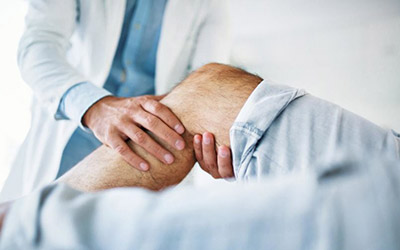A new study published in the Journal of Bone and Joint Surgery found that 90% of Americans with osteoarthritis suffer too long before having a knee replacement that could improve their quality of life.
The study also found that 25% of people who do choose knee surgery are getting it too early.
One of the questions we frequently hear from patients is; “when is the right time to have a knee replacement?”
This blog discusses some of the things considered before determining the right time for a patient to have this procedure.

When is the right time to have a knee replacement?
This is a valid question assuming that an orthopedic surgeon has told you that you have advanced knee arthritis (bone on bone) and nonoperative therapies are no longer working for you.
I use three general guidelines when determining when a patient should have a knee replacement:
- Unable to sleep at night because of knee pain
- No longer able to walk one block
- Tired of living with knee pain
Once it’s decided that it’s time for knee replacement surgery, we will discuss implant options (partial knee replacement surgery or total knee replacement surgery), as well as the details of the procedure.
Knee Replacement Recovery
What can help you recover from knee replacement surgery?
When recovering from your knee replacement surgery, first and foremost, keep a positive attitude. The pain will improve with time. Do not get depressed or second-guess your decision to have surgery because you are having pain lasting longer than you think is normal. Everyone recovers differently and expectations may be different from what you are experiencing.

Some patients are almost fully recovered by three weeks, and some do not reach that point until three or four months after surgery. All patients are different in their recovery time.Slow and steady progress is the goal.
Pushing through pain and swelling may lead to more pain and swelling. This is not advised. Try to gain motion and increased ambulation (movement) over the first two weeks, with a goal of five degrees to 90 degrees of flexion. And remember, when elevating the surgical leg, it should be six inches above the heart.
Work on full knee extension (0 degrees flexion) not just flexion. Too often patients and therapists focus only on flexion. Full extension greatly facilitates walking ability. And movement is key.
Related Research Articles:
Preoperative Warming Reduces Intraoperative Hypothermia in Total Joint Arthroplasty Patients
Tibial Resection and Coronal Alignment in Total Knee Arthroplasty